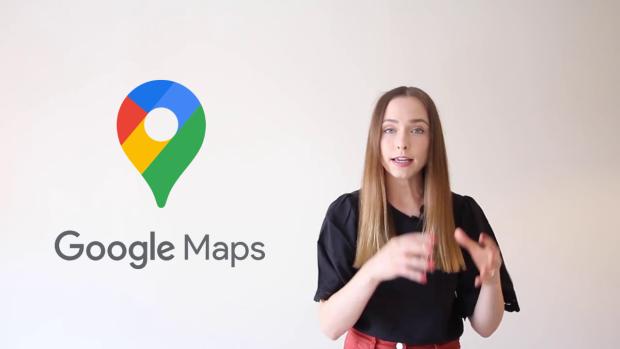Design Week 2022: Mapping it out

Rachel Inman, UX Design Lead at Google
With more than half of the world’s population currently living in urban areas, and that figure projected to increase to 80% by 2050, NYU Tandon’s annual Design Week, run by the Design Lab @ NYU Tandon MakerSpace, took on a timely theme: how might we reimagine cities to be more equitable, inclusive, and human-centered?
The week’s events were planned with an overarching ideal in mind–that engineers, architects, urban planners, designers, and inhabitants must come together to create holistic, real-life solutions across all scales in order to develop the urban spaces of the future.
As New Yorkers, we’ve all been there: you emerge from the subway only to discover you have no idea which direction you’re facing or how to plan an efficient route to your destination. Rachel Inman, UX Design Lead at Google, is dedicated to improving that situation, as well as helping travelers explore new cities, locals find what they need and discover something new, and so much more.
All cities are different, she explains: navigating New York’s generally orderly grid is a much different experience than, for example, finding a specific restaurant in Tokyo, where it might be tucked away on the 18th floor of an office tower, reachable only via an obscure elevator.
Inman learned to love navigation early on, thanks to growing up in a household where dinner was eaten off world map placemats, copies of National Geographic were in plentiful supply, and her father not only worked in a map store but sometimes showed up at her school dressed as “Geo-Man” in a globe-themed costume of his own design. She later became especially fond of Jane Jacobs’ seminal volume The Death and Life of Great American Cities, which discusses the “ballet of a good city sidewalk [which] never repeats itself from place to place, and in any one place is always replete with new improvisations.”
Inman joined Google in 2014, and among the initiatives she has led there have been Project Sunroof, a way for homeowners to estimate how much they could potentially save by installing solar panels, and Global Fishing Watch, which allows environmentalists and officials to monitor protected areas of the ocean for illegal activity.
She also oversaw a major redesign of the popular Google Earth. “We noted that a lot of teachers were using Google Earth in the classroom to enhance their lessons, and we reasoned that if we could make it even better for them and their students, we would be making it better for everyone,” she recalls. (Workshopping with teachers around the country resulted in hundreds of new ideas.)
Among the most challenging projects Inman has ever tackled has been the development of the Google Maps Live View augmented reality experience. That effort to build world-scale, outdoor AR taught her several lessons, she says, including the importance of rapid prototyping and testing with users to uncover the most effective UX patterns for this new navigational experience. She notes that the project wouldn’t have been possible without her team’s ability to create over 120 prototypes and get feedback from people outside the team on a weekly basis.
UX designers, she stresses, must always keep their end-users in mind. In the case of those using Google Maps, she says, you never know how you might be affecting their lives: someone exploring a new neighborhood might end up moving there, someone making their way to a gallery could discover a piece of art that changes their view of the world, a person searching out the area’s best soup dumplings might reconnect with an old friend over the meal.
Inman and her team have the help of a cadre of Google Maps Local Guides, who share their expertise about their cities and towns, give reviews, and report on accessibility features. They act, in effect, as Google’s eyes and ears, and provide a diversity of viewpoints. After all, she says, you can’t know what a walker will experience, if you’ve only ever driven your car around an area.
“It was fascinating to get a behind-the-scenes look at apps many of us use every day,” said Victoria Bill, the founding director of Tandon’s MakerSpace. “Rachel helped make Design Week, which saw more than 100 attendees RSVPing to each event, a resounding success. I think her experiences resonated for every aspiring maker, innovator, and designer at Tandon.”
Industry Assistant Professor Regine Gilbert, author of the book Inclusive Design for a Digital World, asserts that Inman’s focus is a vital one. "A human-centered approach is a must with user experience design,” she says. “Designing something with an inclusive lens requires that we approach design with a diverse group of users in mind from the beginning of any project."
Bill emphasizes that thanks are owed to the MakerSpace staff members who helped organize a great week of events.
- Design Lab Manager Molly Ritmiller
- Communications Team Co-Lead Florentina Sergiou
- Communications Team Co-Lead Masuma Somji
- Design Lab Coordinator Som Liengtiraphan
- Design Lab Coordinator Janelle Roswell

